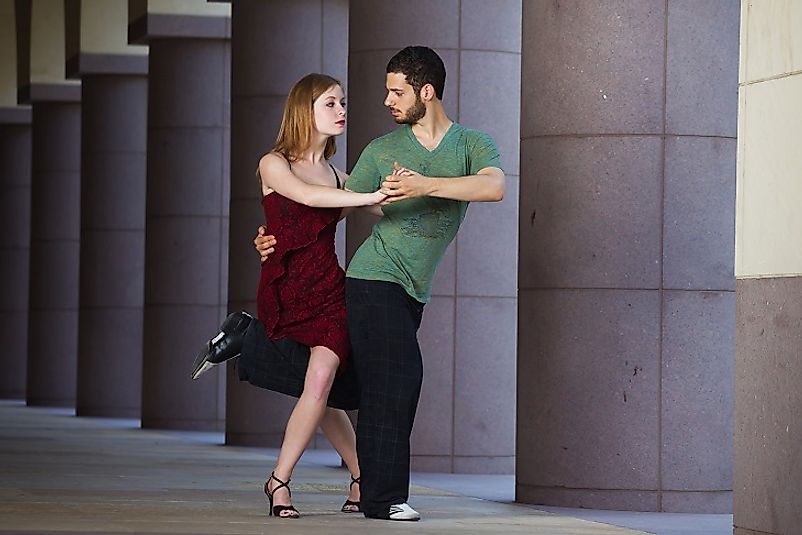What Is Argentine Tango Dance?

For many, the country of Argentina is synonymous with tango dance and tango music, which have been popular there for over a century now. The beautiful and distinct dance has constantly been altered and improved but has not lost its Argentine identity and roots. The dance sprung up from the poor, underprivileged areas of Buenos Aires and quickly spread to Europe mainly as a couple dance. Despite the efforts of the conservative group to get rid of the dance in 1955, it gained even more popularity in the 1980s, becoming one of the world’s most popular dance styles.
5. Overview and Characteristics -
Argentine Tango dance is a social dance that accompanies tango music. It is an energetic, playful, and passionate dance involving two dance partners which is of a great potential for connection and expression. It is referred to as a passionate dance because of the close attachment between the dance floor partners. Argentine Tango dance is characterized by the urge to listen to and talk with the dance partner. It involves both the leader and a follower. The leader offers an invitation to the follower through embrace while the follower decides on the way to accept the leader’s invitation. Both of them maintain a harmony and connection throughout the dance.
4. Origins -
In the 1800s, Buenos Aires was a hot spot for many immigrants who were visiting Argentina, especially from Europe and Africa. The immigrants found themselves lonely and depressed in the city because they could not get a real outlet for entertainment. They began meeting in joints and bars mixing their different cultures with the local Latin music and producing a new style of music which they called tango. A new social dance developed from the new style of musical blend. Initially, the dances were inspired by sexual tension between the revelers and the prostitutes and thus involved emotional undertones with sensuality being a key component.
3. Spread and Development -
The Argentine Tango dance began in the 19th Century among groups of immigrants who met in clubs and joints for entertainment. They quickly fused their styles with the local Latin Music to form the tango music which gave birth to the tango dance. Tango made its way to the Europe in the early 20th Century where it was adopted by the upper class. In America, it was introduced in the 1920s through the film “Horseman of Apocalypse.” It mixed with other social dance styles and inspired some of the Hollywood theatrics. It developed into a simple, codified move-set. The tango dance evolved into a more open position and distinctive body lines. It is now a popular ballroom dance in most countries both for recreation and competition.
2. Notable Practitioners -
Tango dance has long been popular with dancers in Argentina and other parts of the world. Some of the notable tango dancers in the Golden era include Carlitos and Rosa Perez who were legendary teachers at several clubs in Buenos Aires. Most of the winners of World Tango Championship have taken lessons from them. Other tango gurus include the Rodriquez family, Misse family, and Carlos Rodriquez and Brigita who teach tango dance in Baltic and Eastern countries. Carlos Gavito who starred in Forever Tango is credited for inventing a tango dance where both partners lean forward against each other more than the traditional tango.
1. Greater Significance and Legacy -
Tango is now an international dance form performed in almost all major cities around the world. Many people think of ballroom whenever tango is mentioned. Tango is more than just a dance but it teaches a lot about how people can grow individually and in a relationship. The posture helps the dancers get more intimate and connected to their partners. Tango dance can also heal issues that one is not aware of. Tango dance has also influenced some of the modern films, including "Assassination Tango" (2002), "Take the Lead" (2006), and "The Tuxedo" (2002), among other films and television shows.







